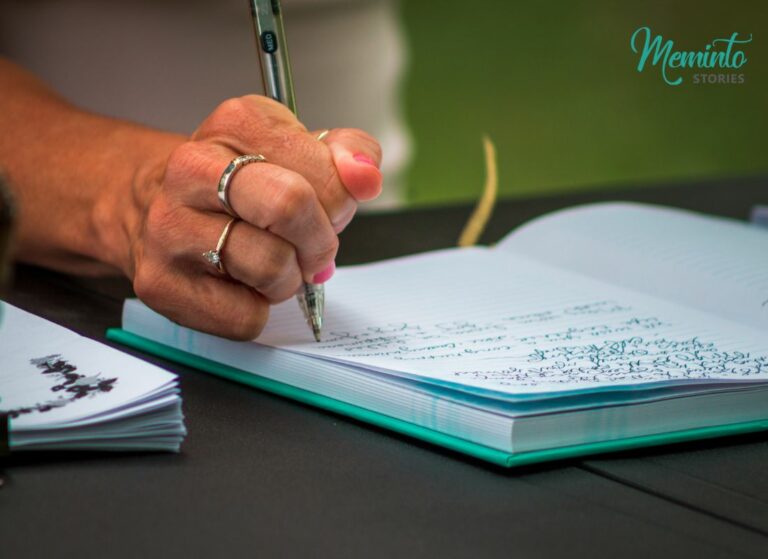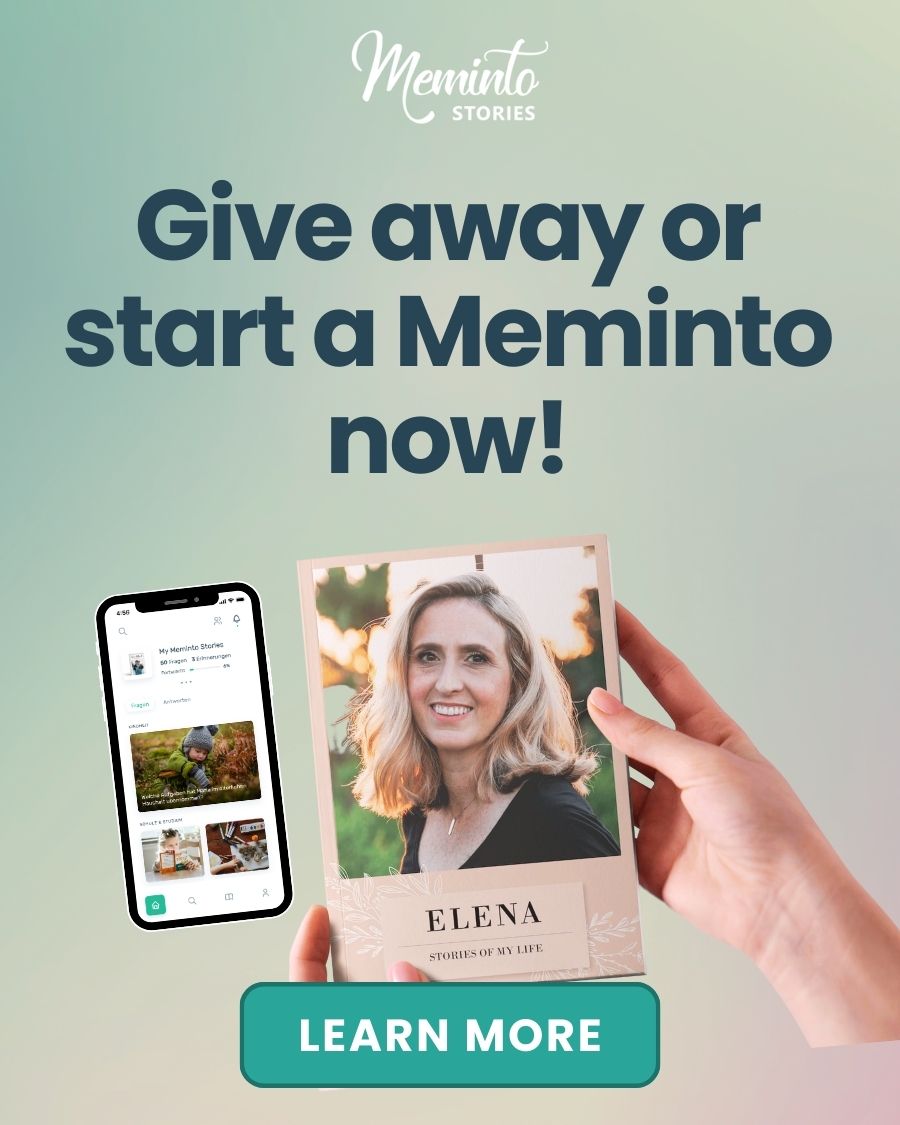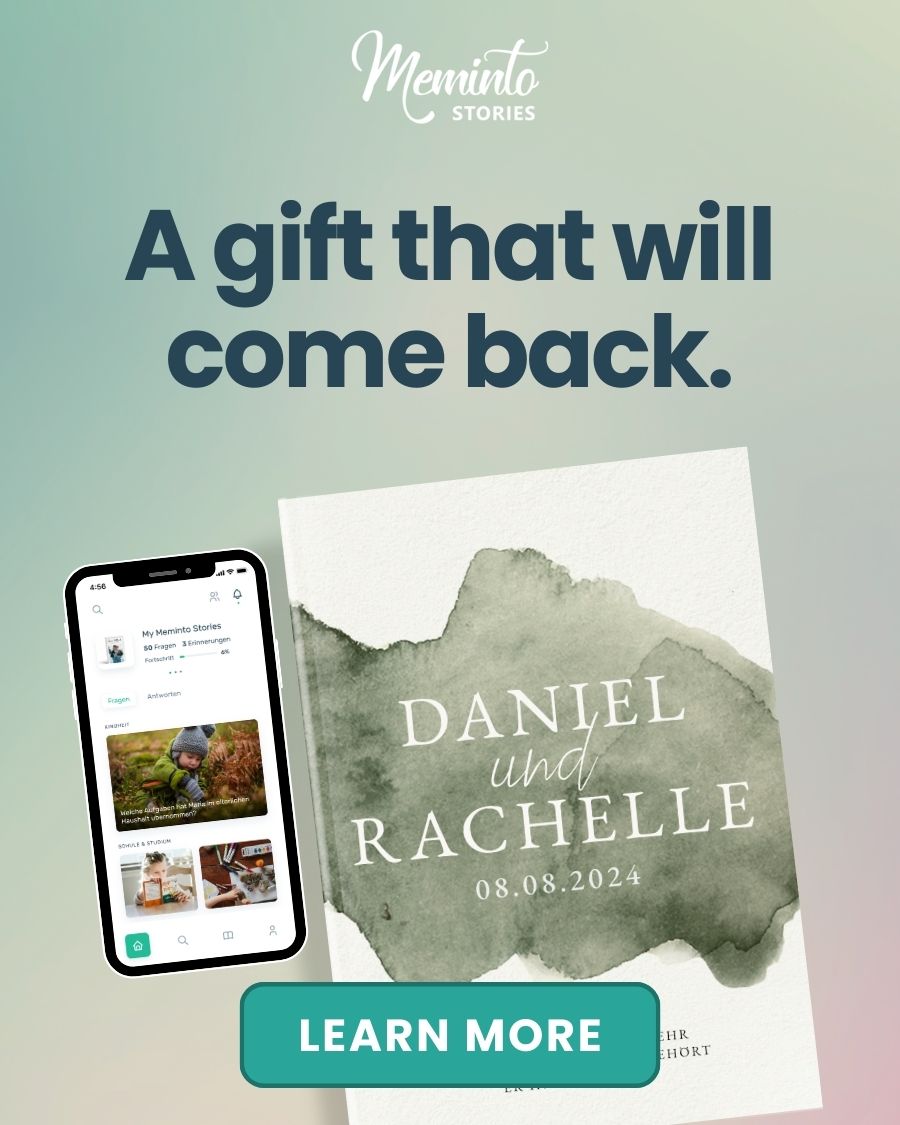The moment you write down your baby’s first laugh – or paste in that wrinkled hospital bracelet – something shifts. These pages start becoming more than a keepsake. They become proof: You were here. We lived this. The late nights, the tiny socks, the first time your baby smiled—those little moments deserve to be remembered. But when you’re a new parent, choosing the right baby book can feel like just another decision stacked on top of a hundred others.
Some books are too detailed, expecting you to write long answers for every prompt. Others barely ask anything at all. And with the pressure of filling every page perfectly, even while you’re still figuring out how to function on three hours of sleep, it’s easy to feel like you’re already falling behind.
That’s why this guide exists. It’s not just about cute designs or popular brands. It’s about helping you choose a baby book that fits your real life; one that feels honest, forgiving, and meaningful, even in the messiest moments.
🗝️ Key takeaways
- Baby books give your digital photos structure, context, and emotional meaning that folders on your phone simply can’t provide.
- The right baby book matches how you naturally capture and share memories—whether through photos, voice notes, written reflection, or creative projects.
- Choose based on your actual schedule and energy level, not the parent you think you should become.
- Modern digital options like Meminto combine the convenience of technology with the permanence of a physical book.
❓ Why a baby book still matters (even if you have 5,000 photos on your phone)
You probably already have thousands of baby pictures saved on your phone or backed up in the cloud. Maybe there’s a folder named “Baby 2025,” filled with snapshots, screenshots, and videos you promised to sort through later. But when was the last time you opened it? And when your child is older, will they be able to find the story in those files or just random moments frozen in time?
A baby book offers something different. It isn’t just a storage space for memories. It’s a place where everything comes together with meaning.
The best part, it doesn’t rely on apps or passwords, which you might end up forgetting nor does it get buried under other notifications. A baby book gives your memories structure, intention, and a personal voice that no photo dump ever could.
Let’s compare the difference:
| What Happens Digitally | What the Baby Book Does Instead |
| You take a photo but forget what made that moment special | You write down what you felt in that moment and why it mattered |
| You save voice notes but never label them | You transcribe those sweet sounds into something they can read later |
| You rely on cloud storage, hoping it’ll be there forever | You create something they can flip through any time, no account needed |
| You snap a hundred photos, but forget why they mattered | You shape those memories into a keepsake with meaning and heart |
You don’t have to stop using your phone to capture moments. But you also don’t have to let your baby’s story live only on a screen. A baby book helps you reflect, remember, and say the things that often get lost in the scroll. Here’s why printing memories still matters.
Your child may never know how many photos you took. But they’ll always remember the feeling of reading your words.
✨ Top baby book styles (and who they’re best for)
Not all baby books are created equal. Some are simple and quick to fill out, others are deeply reflective, asking for pages of writing, and then there are those that turn memory-keeping into a full-blown creative project. The right one depends on what season of parenting you’re in, and what kind of memory you want to leave behind.
Here’s a look at the most common styles, and who they tend to work best for:
| Baby Book Style | Best For | What to Expect |
| Prompt-Based Journals | Busy parents who want guidance | Short, structured prompts like “What was your baby’s first word?” or “What surprised you most?” Great for when your brain is fried but you still want to document something meaningful. |
| Blank Scrapbooks | Creative parents who love DIY | These offer total freedom. You can paste photos, write your own captions, add keepsakes, and get artsy. But they require time and often, some glue sticks. |
| Photo-Centric Books | Visual storytellers | These are built around photos, with space for captions or light notes. Think modern, clean layouts with a “just add pictures” vibe. |
| Milestone-Focused Books | Parents who want to track development | These highlight firsts: first smile, first steps, first holidays. Some can feel generic, but others offer space to personalize each event. |
| Question-Led Memory Books (like Meminto) | Parents who want to reflect, not just record | These dig deeper. Instead of just tracking moments, they invite you to tell the story behind them with flexible formats, reminders, and even voice-to-text features. |
Choosing the right book is about more than style. It’s about fit. Some days, you’ll want to write long stories. Other days, a quick sentence will have to do. That’s why many parents appreciate tools like Meminto, which let you start small and still build something meaningful.
You don’t need to be a scrapbooker or a writer. You just need to care enough to capture what matters before it slips away.
1. Prompt-based journals
For the tired but sentimental parent who wants to remember the small stuff.
You know those evenings when your baby’s finally asleep, the dishes are still in the sink, and you’re not sure what day it is? That’s when a prompt-based journal quietly shows up and says, “Just tell me one thing. I’ll do the rest.”
These books don’t expect essays. They simply ask.
- What was her favourite sound this week?
- What surprised you most about yourself today?
- How did your baby react when she saw rain for the first time?
You don’t have to figure out where to begin. Each page gives you a place to start, and every answer—no matter how short—builds into a beautiful timeline of your baby’s first year and your growth as a parent.
Check out 100 thoughtful prompts you can use to get started.
Why parents love them:
- No pressure to be creative. You’re not building a scrapbook or writing a memoir. You’re answering simple, heartfelt questions.
- Perfect for sleepy nights. Just a few minutes of writing gives you something to look back on, even when the week was a blur.
- Less blank-page anxiety. The questions are thoughtful but not demanding. They guide your reflection without making it feel like a chore.
“So much more than just a photo book. Through the questions, beautiful old memories come up again.”
– Verena, Austria
If you’re someone who freezes at the thought of a blank page but still wants to remember what it felt like when your baby squeezed your finger for the first time, this format is for you.
And you don’t have to stick to writing, either. Some digital journals (like Meminto’s) let you record voice notes, upload short videos, or type your answers on your phone when your hands are too full for a pen.
2. Blank scrapbooks
For the memory-keeper who wants full creative freedom.
There’s something beautiful about starting with nothing but a blank page. No rules. No prompts. Just the freedom to tell your baby’s story your way.
Blank scrapbooks are perfect for parents who enjoy putting their own spin on things. You can paste in photos, write your own captions, save a hospital bracelet, or turn that coffee-stained napkin with her first restaurant doodle into a forever keepsake.
It’s not about being crafty; it’s about being present.
How parents use them:
- Add monthly photo progress with handwritten notes beside each.
- Include keepsakes like locks of hair, first birthday invitation, or even her first drawing.
- Create visual stories from special days, like her first beach trip or a rainy morning snuggle session.
“I made one for my son so he knows how great our family time used to be. He already loves it and enjoys looking at it over and over again.”
– Ina, Germany
A few things to keep in mind:
- These books take more time. If you’re the kind of person who loves journaling, scrapbooking, or making time capsules, this is a joy. But if you’re barely getting through laundry, it might feel like one more unfinished project.
- Some parents prefer to start with a few blank pages at the end of a structured baby book. That way, they can still get creative without the pressure to fill everything from scratch.
If you love telling stories in photos, textures, or objects, a blank scrapbook gives you space to express your love in a completely unique way. And if you ever decide you need a little more guidance, you can combine it with something like Meminto—use one for the raw visuals and the other for deeper storytelling.
3. Photo-centric books
For parents who think in pictures and want their images to do most of the talking.
Sometimes a picture really is worth a thousand words. Photo-centric baby books understand this. They’re designed around your images, with clean layouts that let your favorite shots shine while giving you just enough space to add context.
These books work especially well for parents who are already comfortable with photography or those who find writing intimidating but still want to create something meaningful.
What makes them special:
- Visual storytelling comes first. The layout revolves around your photos, not lengthy text entries.
- Quick to fill. Most pages only need a sentence or two of context, making this perfect for busy parents.
- Professional look. Many photo-centric books have sleek, modern designs that feel more like coffee table books than traditional baby books.
How to make them work:
- Choose photos that tell a story on their own, then add just enough text to give context.
- Include a mix of posed shots and candid moments—the messy, real-life stuff often makes the best memories.
- Don’t feel pressure to use every page. Sometimes white space makes your favorite images even more impactful.
“What I liked was capturing memories in the form of videos and audios. Nobody does that as well as Meminto.” — Natalie, Australia
The key is choosing photos that make you smile and adding just enough words to help your child understand why that moment mattered to you.
Check out: 10 DIY baby book ideas to guide your thoughts.
4. Milestone-focused books
For parents who want to track development and celebrate every “first.”
First smile. First laugh. First tooth. First steps. First word. Milestone books are designed around these big moments, giving you a framework to document your baby’s development while capturing your emotions along the way.
These books work well for parents who like structure and don’t want to miss any of the “typical” baby experiences. They’re especially helpful for first-time parents who aren’t sure what to expect or what moments are worth remembering.
What to expect:
- Pre-planned sections for common milestones like rolling over, sitting up, and saying “mama.”
- Development tracking with space for dates, photos, and your thoughts on each achievement.
- Holiday and seasonal pages for first Christmas, first Halloween, first summer, etc.
The good and the challenging:
- Pros: You’ll never forget to document the big moments. The structure takes the guesswork out of what to include.
- Cons: Sometimes these books can feel generic or pressure you to hit certain milestones by specific ages.
Making them personal:
- Don’t worry if your baby doesn’t hit milestones exactly when the book expects. Every child develops differently.
- Add your own “firsts” that matter to your family—first time meeting grandparents, first road trip, first time sleeping through the night.
- Use the milestone framework as a starting point, then add your own voice and personality to each entry.
The best milestone books leave plenty of room for you to add context, emotions, and the little details that make each achievement special to your family.
5. Question-led memory books (like Meminto)
For parents who want to reflect deeply and create something truly personal.
These books go beyond tracking what happened to explore why it mattered. Instead of just documenting milestones, they invite you to tell the stories behind them. They ask questions you might not think to ask yourself, helping you capture not just memories but emotions, relationships, and the unique experience of becoming a parent.
What makes them different:
- Thoughtful prompts that go deeper than basic milestone tracking
- Flexible format that adapts to your schedule and energy level
- Multiple ways to contribute, like writing, voice recordings, photos, and even videos
- Guided reflection that helps you notice and remember things you might otherwise forget
Sample questions they might ask:
- What does your baby’s cry sound like, and how has your response to it changed?
- What surprised you most about your partner as a parent?
- What do you hope your child inherits from you, and what do you hope they don’t?
- How has becoming a parent changed your relationship with your own parents?
Why parents choose this style
“Thanks to Meminto, I finally had the opportunity to create a great memory book for my children without spending a lot of time ☺️” — Eileen, Germany
“With Meminto Stories I found a way to keep all my flashbacks of the first adventure with our child in a book. Now we can cherish them forever.” — Selma, UK
These books recognize that parenthood is as much about your journey as it is about your baby’s milestones. They help you capture the emotions of these early months—the overwhelm, the joy, the unexpected moments of clarity, and the everyday magic you might otherwise forget.
The Meminto Life Book.
Answer a life question weekly and hold a real book in your hands within a year.
❓ Why Meminto baby book stands out for new parents
After looking at all these different styles, one option keeps coming up in conversations with parents: Meminto. It’s not just another baby book. It’s designed specifically for families who want something meaningful but don’t have endless time to create it.
1. Real stories, thoughtful prompts
Meminto doesn’t just ask you to list milestones. It helps you tell the real story of your baby’s first year and your journey as a parent. The questions are designed to capture both the big moments and the tiny details that matter.
Instead of generic prompts, you get questions like:
- How did your baby change the way you and your partner relate to each other?
- What’s one thing about your baby that no one else notices but you?
- What do you want your child to know about this time in your life?
“So much more than just a photo book. Through the questions, beautiful old memories come up again. Even videos could be loaded into the book. Emotions like when it all happened!” — Verena, Austria
2. Multi-format memory keeping
One of the biggest advantages of Meminto is flexibility. You can:
- Write when you have time and energy for reflection
- Record voice notes when your hands are busy but your heart is full
- Upload photos and videos that capture moments words can’t describe
- Switch between your phone and computer depending on where you are
“I wrote the whole book on my smartphone and am amazed at how well it worked despite the small display.” — Reiner, Germany
This flexibility matters when you’re parenting. Some days, you’ll want to write long entries about how your baby’s laugh makes you feel. Other days, a quick voice note while you’re rocking them to sleep is all you can manage. Meminto meets you where you are.
3. Emotional depth without overwhelm
Traditional baby books often feel like homework—another task on your already overwhelming to-do list. Meminto takes a different approach. It sends gentle reminders (that you can turn off if they feel like too much) and lets you contribute as little or as much as you want, when you want.
“What I really liked is the 10% discount for creating a second book for another child after the first one. With the capacity for up to 250 pictures, it’s also cheaper than a photo book, especially with 300 pages.” — Carolin, Germany
The questions are designed to spark memories and emotions, not stress you out. And because everything is saved as you go, you never have to worry about losing your work or starting over.
4. A physical book you can hold
At the end of the process, you get something tangible—a real book you can flip through, share with family, and eventually give to your child. In a world where so much of our lives exists only on screens, there’s something powerful about having a physical keepsake.
“I highly recommend the childhood book. I made it for my son so he knows how great our family time used to be. He already loves it and enjoys looking at it over and over again.” — Ina, Germany
How to choose one that feels right for you
The best baby book? It’s the one you’ll reach for again, because it feels like you. Not the prettiest one on the shelf or the one with the most Instagram-worthy photos, but the one that fits how you naturally capture and share memories.
1. Consider your natural memory-making style
Photo-centric books work especially well for visual storytellers who prefer to let pictures do most of the talking. If you’re always taking photos but rarely write long captions, look for books that only need a sentence or two per image.
Books that accept voice recordings are perfect for parents who talk through their day while caring for their baby. You’re already processing your thoughts out loud so why not capture them?
Question-led books like Meminto offer flexibility for parents who love writing and reflection but struggle to find quiet time. You can fill them out on your phone during feeding sessions or record voice notes that get transcribed later.
Blank scrapbooks give you complete freedom to design pages your way if you’re crafty and hands-on and find creative projects relaxing.
2. Match the book to your current Reality
Think about your typical week. When would you realistically work on a baby book?
- Quick moments between feedings: Choose digital options you can fill out on your phone
- Weekend nap times: Photo books or milestone trackers work well for these longer sessions
- Evening wind-down: Prompt-based journals are perfect for quiet reflection time
- Whenever inspiration strikes: Blank books let you add memories without following a schedule
3. Key questions to ask yourself
Before choosing a baby book style, reflect on your natural preferences and habits. Understanding how you already think about and share memories will guide you toward the right option.
- Memory focus: Some parents naturally gravitate toward developmental milestones—first smile, first steps, first words. Others want to capture emotions and everyday moments—how tired you felt during night feedings or the way your baby’s face scrunches when they laugh. Choose a book style that matches what already feels important to you.
- Storytelling style: If you love telling detailed stories about your baby’s day, look for books with space for longer entries. If you prefer quick updates with photos, choose accordingly.
- Future format preferences: Consider whether you want your child to hear your voice through audio recordings, see your handwriting, or flip through a polished photo collection.
4. Practical considerations
Beyond finding a style that matches how you think and share memories, there are logistical factors that will determine whether you actually complete your baby book. Consider these practical elements before making your choice:
- Time investment: Be realistic about how much time you can dedicate. Some books need daily entries, others work with weekly or monthly updates.
- Physical vs. digital: Physical books create tangible keepsakes but require you to sit down with a pen. Digital options offer convenience and multimedia features but result in a printed book at the end.
- Collaboration: If you want your partner or family members to contribute, choose platforms that make sharing easy.
- Budget: Consider both upfront costs and ongoing expenses like printing, additional pages, or multimedia features.
The best baby book is the one that makes capturing memories feel natural rather than forced. When you imagine using it, does it feel like something you want to do or something you have to do? Trust that instinct since it’s usually right.
Get $10 off your first Meminto book project 📖
We appreciate you for reading this article. As a token of our gratitude, we would like to offer you a special $10 discount on your first book with Meminto!
💡 Conclusion
Your baby’s first year will go by faster than you can imagine. Right now, every day might feel endless, but one morning you’ll wake up and realize your tiny newborn has become a walking, talking little person with opinions about everything.
The memories you’re making right now—the 3 AM feeding sessions, the way they scrunch their nose when they smile, the sound of their tiny hiccups—these moments are fleeting. They deserve to be remembered not just in the thousands of photos on your phone, but in words that capture what it felt like to live them.
A baby book isn’t about creating the perfect keepsake or documenting every milestone flawlessly. It’s about taking a few minutes here and there to pause, reflect, and say: this mattered. You mattered. We were here together, and it was beautiful, even when it was hard.
And if you feel like you’ve waited too long to start? You haven’t.
Whether you choose a simple prompt journal you fill out once a week, a creative scrapbook that becomes a family art project, or a thoughtful digital option like Meminto that grows with you, the important thing is choosing something you’ll actually use.
No matter when you start, you’re right on time. Your memories are waiting to be remembered, and we’re here to help you capture them.


